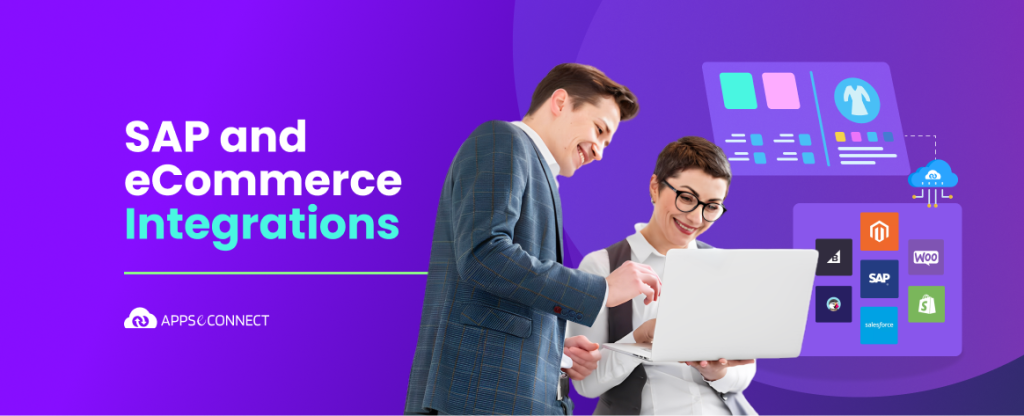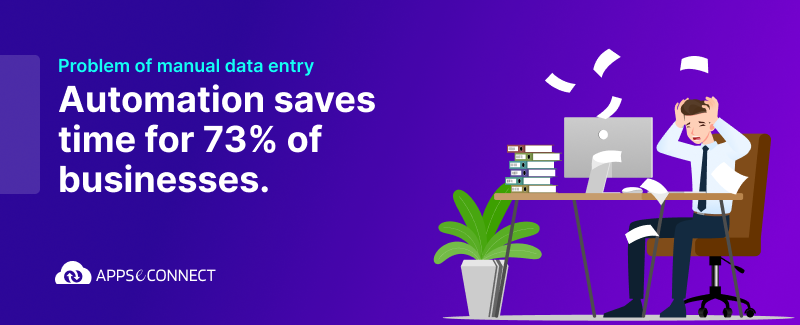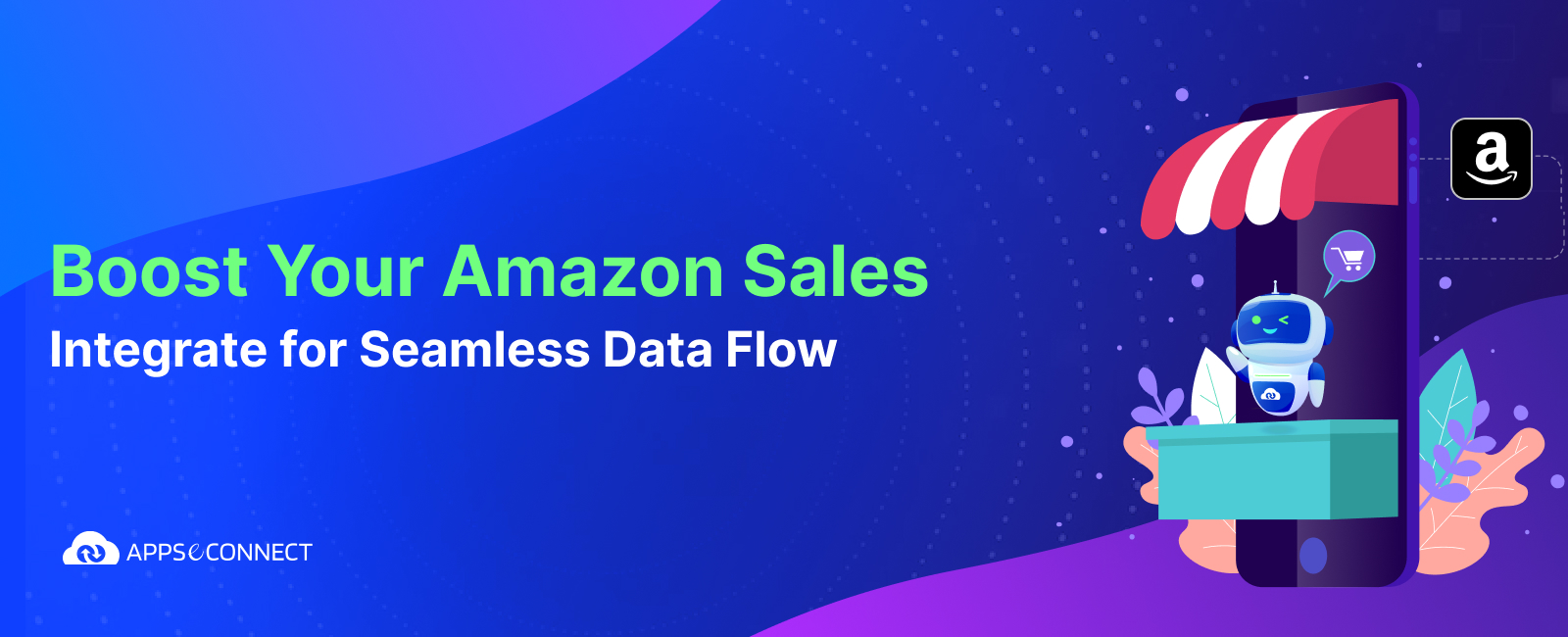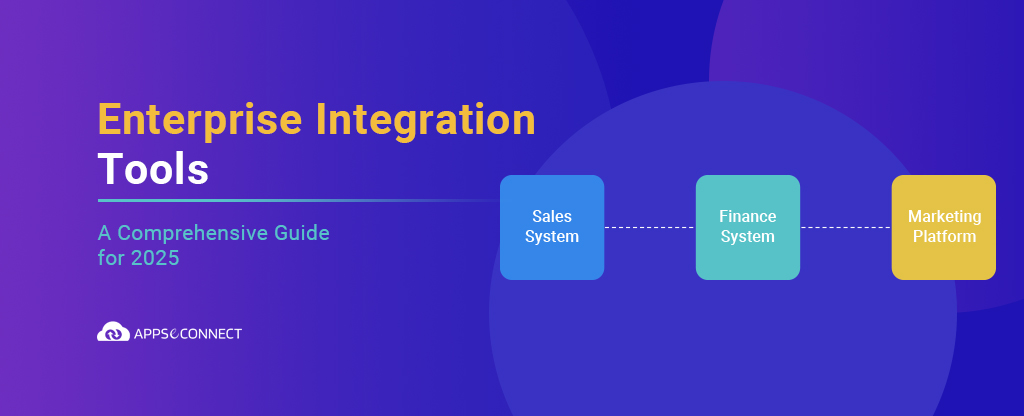The rapid growth of online businesses in recent years has transformed the way customers shop and conduct transactions. With global eCommerce sales expected to reach nearly 8.1 trillion dollars by 2026, more companies are embracing digital transformation. It has become imperative for brands to streamline their operations and ensure seamless interactions with customers. In this context, integrating eCommerce platforms with SAP emerges as a crucial necessity for online businesses. SAP, a comprehensive enterprise resource planning (ERP) software, offers many benefits when integrated with eCommerce platforms, enabling businesses to enhance their operational efficiency, customer experience, and overall profitability. Thus, to ensure a business remains scalable and competitive in the long term, it must consider implementing an SAP and eCommerce integration if they are utilizing those applications.
The Need for SAP eCommerce Integration
In the fast-paced world of online businesses, eCommerce integration with SAP can provide numerous advantages and address critical needs. Some key reasons why businesses need eCommerce integration with SAP are as follows:
1. Streamlined Business Processes: Every SAP ERP solution is a feature-rich ERP application that can manage various aspects of a business such as inventory management, order processing, finance, and supply chain management. With Shopify and eCommerce integration, businesses can ensure a seamless flow of information between different departments, eliminating manual data entry and reducing errors.
2. Real-Time Inventory Management: Inventory management is one of the most critical processes for managing an eCommerce business. It is crucial for online businesses to ensure accurate stock levels, avoid stockouts, and fulfill customer orders promptly. Through SAP and eCommerce integration, brands can achieve real-time bidirectional data sync of their inventory data. With the integration, when any online order is placed by a customer the inventory data is immediately updated in SAP. The real-time inventory data update allows businesses to have accurate visibility into stock levels and prevent overselling or understocking situations.
3. Efficient Order Processing: When an online order is received on the webstore, the SAP and eCommerce integration ensures that the order details are seamlessly transferred to SAP for processing. This integration eliminates the need for manual data entry, reducing the risk of errors and speeding up the order fulfillment process. It enables businesses to automate order confirmation, generate shipping labels, track shipments, and provide customers with real-time updates on their orders.
4. Improved Customer Experience: The eCommerce integration with SAP allows businesses to consolidate customer data from various touchpoints, including online purchases, customer support interactions, and marketing activities. The unified view of customer data offered by SAP and eCommerce integration facilitates better customer relationship management, personalized marketing campaigns, and improved customer service. By leveraging this integration, businesses can provide a seamless and consistent experience to their customers across different channels.
5. Streamlined Finance Management: SAP offers robust business finance management capabilities, including accounts receivable, accounts payable, and financial reporting. By integrating SAP with the eCommerce platform, businesses can ensure accurate and timely recording of financial transactions related to online sales. This integration enables businesses to generate invoices automatically, reconcile payments, track revenue, and gain comprehensive financial insights.
Challenges to Implementing SAP eCommerce Integration
Implementing SAP and eCommerce integration comes with its own set of challenges. While the benefits of integrating these two powerful systems are immense, businesses need to be aware of the obstacles they may encounter along the way. Overcoming these challenges requires careful planning, expertise, and a thorough understanding of both SAP and eCommerce platforms. The major challenges that can come up during the process of implementing an SAP and eCommerce integration are as follows:
1. Technical Complexities: Integrating SAP with a front-end eCommerce platform requires users to recreate the business logic between the two applications. The integration process involves mapping data fields, establishing data synchronization mechanisms, and ensuring compatibility between different systems and application versions. Thus, implementing the integration involves complex technical configurations and customizations that require expertise in both SAP and eCommerce systems, including understanding their respective data structures and APIs. Therefore, businesses may need to invest in skilled resources or seek assistance from integration specialists to overcome these technical challenges.
2. Challenges in Data Mapping: Data mapping and transformation can be challenging during the implementation of SAP and eCommerce integration. Differences in data structures and formats between the systems require careful analysis and mapping. Complex data structures, varied data formats, and semantic mapping need to be addressed to ensure accurate integration. Additionally, considerations for data volume, performance, consistency, and ongoing maintenance are crucial. Overcoming these challenges involves aligning data elements, formats, and semantics, optimizing performance, ensuring data quality, and establishing processes for maintenance and updates. Thorough planning, expertise, and attention to detail are essential for a successful integration that enables seamless data flow between SAP and eCommerce platforms.
3. Customization and Scalability: Customization of the integration process is often necessary to meet the unique business requirements of organizations. Each organization has its specific workflows, processes, and data needs that may differ from standard integration practices. SAP ERP applications are highly configurable systems that can be customized to meet specific business requirements. However, configuring the customizations of SAP with the eCommerce platform can be challenging. Businesses may face difficulties in mapping their unique business processes to SAP’s framework or in adapting SAP’s functionalities to accommodate eCommerce-specific needs. Moreover, as businesses grow and experience increasing transaction volumes, ensuring scalability and optimal system performance becomes crucial. Thus, enterprises also need to consider a flexible integration platform as a middleware that can accommodate the scalability requirements of both systems to handle high transaction loads without compromising performance.
4. Cost and Time Consideration: Implementing an integration from scratch for SAP and an eCommerce platform requires considerable time and financial investment. The costs associated with software licenses, integration tools, customization, consulting services, and implementation can be significant. Moreover, the integration process may increase the project time, depending on the complexity of the applications, data migration requirements, and the availability of resources. Enterprises can overcome these challenges by utilizing a pre-built connector package for SAP and eCommerce integration.
Implementing an SAP and eCommerce integration is not without its challenges. Technical complexity, data synchronization, customization, scalability, change management, and cost considerations are some of the key challenges that businesses may encounter. However, with proper planning, integration best practices and utilizing pre-built connectors, businesses can benefit from a seamless integration between SAP and eCommerce platforms.
Best Practices for Third-Party SAP and eCommerce Integration
The seamless integration of SAP and an eCommerce platform can enable efficient data exchange, real-time synchronization, and automation of critical business processes. However, to achieve successful integration, it is essential to follow best practices that ensure compatibility, security, scalability, and maintainability. Here are some of the best practices when integrating an eCommerce application with SAP.
1. Define Integration Requirements: The first step is to clearly identify the specific integration objectives, such as automated order processing, synchronizing product information, or streamlining inventory management. The scope and expectations of the integration project, including timelines and deliverables also need to be clearly defined before starting the implementation.
2. Selecting the Best Integration Solution: Opting for an integration solution boils down to either developing a custom integration or going for an off-the-shelf pre-built integration solution. Factors like development time, available resources, complexity in implementation, and costs associated with both integration methods should be thoroughly considered. Understanding the custom vs pre-built integration pros and cons can help enterprises select the integration methodology that best suits their business needs.
3. Choosing the Right SAP Integration Method: SAP provides a diverse range of integration methods to cater to different business needs, scalability requirements, and technical capabilities. These integration methods encompass file-based, web services, and middleware-based approaches. When choosing an integration method, it is crucial to align it with the specific business requirements, ensuring that it effectively meets the organization’s unique needs and objectives.
4. Establish Proper Data Governance: Data governance is the set of rules, processes, standards, and metrics that are put in place to ensure the effective and efficient use of information in enabling an organization to achieve its goals. Thus, establishing a proper data governance framework for the SAP and eCommerce integration to ensure data accuracy, consistency, and security throughout the integration process is necessary.
5. Thorough Post-Implementation Testing: Prior to the SAP and eCommerce integration has been implemented, it is a best practice to conduct comprehensive testing within a testing environment of the integration solution to ensure its stability, reliability, and accuracy. Various scenarios, including different data flows, large data volumes, error conditions, and edge cases should be tested. Also, end-to-end testing to validate the entire integration workflow, from data creation or modification to synchronization and verification in both systems should be performed.
6. Monitor Integration Performance: Monitoring the performance of the SAP and eCommerce integration after implementation is another best practice to follow to ensure seamless and stable integration. Once the integration is live monitoring capabilities should be implemented to track the integration metrics’ performance and health, such as data output, response time, error rates, and system resource utilization. The integration should also be monitored regularly to identify bottlenecks, detect performance issues, and optimize the integration solution as needed.
7. Plan for Future Scalability: As the business grows, the suite of technologies used also evolves with it. Therefore, the SAP and eCommerce integration should be designed with scalability in mind, considering potential increases in data volumes, user loads, and transaction volumes. Potential future changes in SAP and the eCommerce platform, such as version upgrades, new features, or changes to APIs (Application Programming Interfaces) should be considered for adaptability.
Download our free eBook on SAP Integration Best Practices and explore the top APPSeCONNECT features for SAP integration, the best practices to go by, and industry-tested use cases to help you relate. In this eBook, readers will get deep insights into the true workings of SAP and the best methodology to adopt during implementation and integration.
Download eBook Now!
The Top SAP Business One eCommerce Integration
While many eCommerce platforms are available in the market, there are some popular standout eCommerce platforms that are the leading choice for customers using SAP ERP applications as their back-end systems. The following are the top eCommerce integrations for SAP:
Adobe Commerce (Formerly Magento)
Adobe Commerce, formerly Magento, is a widely used eCommerce platform across the industry for its flexibility and robust features that are backed by the expertise of Adobe. Implementing Adobe Commerce integration with an SAP ERP can offer several benefits for eCommerce businesses. Through the SAP and Adobe Commerce integration, companies can synchronize critical business data like customer info, inventory data, and orders.
Some prominent brands utilizing SAP and Adobe Commerce integration to automate their business include Helly Hansen, Paul Mitchell, Belkin, Olympus, Coca-Cola, Nestlé, and Johnson & Johnson.
Integrating SAP and Adobe Commerce can provide businesses planning to expand their eCommerce market with a significant time-to-market advantage, positioning them ahead of competitors. This seamless integration facilitates the synchronization of essential data, including customer details, product information, pricing, inventory data, and more, between SAP and Adobe Commerce. As a result, businesses can efficiently manage operations, deliver consistent customer experiences, and drive growth in the ever-evolving eCommerce landscape.
Shopify
Shopify is one of the leading and widely known eCommerce platforms in the industry that provides an effortless setup process that allows even non-technical users to create and launch their online stores quickly. Shopify enables businesses to create visually appealing and professional-looking websites. Moreover, it offers a comprehensive suite of features, including inventory management, payment gateways, order fulfillment, and marketing tools, empowering businesses to manage their online operations efficiently.
Noticeable brands using SAP and Shopify in their application landscape include Fossil, MVMT and Rebecca Minkoff
By incorporating SAP and Shopify integration, businesses can gain a significant competitive advantage, accelerating their time-to-market. This integration offers enhanced customer management, automated product data synchronization between SAP and Shopify, seamless mapping of tax and shipping charges, real-time stock data updates, and many other valuable features.
WooCommerce
WooCommerce is a popular eCommerce plugin for WordPress websites and as of 2023 is a global leader in the eCommerce industry with a market share of 39%. With the core WooCommerce plugin being free, businesses that have a WordPress website can effortlessly add eCommerce functionalities to their website. As a free and open-source eCommerce solution, WooCommerce allows any developer the flexibility to audit, modify and expand on the code. With the platform being in the industry for over a decade, there is a strong community of experts and developers that new users of the platform can network with to learn from.
Some important case studies for businesses utilizing SAP and WooCommerce worth exploring include:
- U.S. Tobacco – Through the SAP S/4HANA and WooCommerce integration, the business achieved a fully automated eCommerce business and on average saved 60% of their time in order processing and logistics.
- Golden Toys – With SAP Business One and WooCommerce the company was able to optimize their Order Fulfillment Cycle by 60% through the automation of their Inventory and Product Management.
Implementing an SAP B1 eCommerce integration offers businesses a seamless bidirectional synchronization of essential business data, including online customer information, item descriptions, inventory stock data, and shipment details. This integration enables businesses to have a comprehensive overview of their eCommerce business performance, streamlining operations and enhancing decision-making capabilities.
Kibo Commerce
Kibo Commerce stands out as a robust and versatile e-commerce platform, offering businesses the tools needed to create and manage online stores effectively. Known for its flexibility and comprehensive feature set, Kibo Commerce facilitates a seamless setup process, enabling users, technical and non-technical alike, to quickly establish and launch their online storefronts. The platform boasts advanced capabilities such as inventory management, diverse payment gateways, order fulfillment, and robust marketing tools, empowering businesses to efficiently handle their online operations.
Leading brands, including [examples], have recognized the advantages of integrating SAP Business One with Kibo Commerce in their application landscape. This integration delivers a competitive edge by accelerating time-to-market and offering enhanced customer management. Through automated synchronization of product data between SAP Business One and Kibo Commerce, businesses benefit from streamlined processes, including real-time updates on stock data, seamless mapping of tax and shipping charges, and other valuable features. The integration not only optimizes day-to-day operations but also ensures a consistent and enriched customer experience, positioning businesses for success in the ever-evolving e-commerce landscape.
BigCommerce
BigCommerce is another widely used eCommerce platform across the industry and with their latest BigCommerce B2B Edition, they bring along several new features and functionalities for their users in the B2B sector. BigCommerce offers one of the fastest and most streamlined onboarding experiences for new users getting started with the platform. The platform also comes with built-in SEO-friendly features like auto-optimized titles and URLs and mobile-friendly themes and templates. Additionally, the updated BigCommerce B2B Edition also brings with it the functionality of multi-storefront capabilities to help manage company accounts, shared shopping lists, quoting, and invoice portals on any storefront. Other features included with the B2B version are the modernized buyer portal to offer a personalized buying experience and headless functionalities to allow the deployment of the platform onto any framework.
Integrating BigCommerce with SAP, businesses gain essential automation capabilities that accelerate workflows through bi-directional synchronization. This SAP Business One eCommerce integration ensures seamless transfer of critical customer information, product details, inventory data, and order information between the two platforms. As a result, businesses can optimize operations, improve efficiency, and enhance overall productivity, empowering them to stay competitive and thrive in the ever-evolving eCommerce landscape.
PrestaShop
Prestashop is a robust and versatile eCommerce platform, making it another compelling choice for online businesses. Its user-friendly interface and intuitive management tools enable even non-technical users to effortlessly build and maintain feature-rich online stores effortlessly. With a vast array of customizable themes and plugins, PrestaShop allows businesses to tailor their website to reflect their brand identity and unique offerings. Moreover, it offers seamless integration with multiple payment gateways, shipping providers, and third-party applications, enhancing the overall shopping experience for customers.
Integrating SAP with PrestaShop offers operational transparency by enabling seamless two-way synchronization of critical business data parameters. This includes comprehensive information on existing and new customers, detailed product listings, accurate order values, and secure payment data. Integrating these two platforms, businesses can achieve a unified and efficient system that enhances data accuracy, streamlines processes, and fosters a seamless shopping experience for customers.
Salesforce Commerce Cloud (formerly Demandware):
Salesforce Commerce Cloud, also formerly known as Demandware before its acquisition by Salesforce, is a highly scalable cloud-based software-as-a-service (SaaS) eCommerce platform. Powered by Salesforce, the eCommerce platform offers brands the opportunity to engage more effectively in a customer’s journey through data-driven touchpoints and artificial intelligence. Salesforce Commerce Cloud also allows brands to deliver a seamless experience with a feature-rich webstore that supports multilingual and multicurrency logic with an omnichannel experience for shopping cart and checkout to maximize conversions.
The Key Touchpoints for SAP and eCommerce Integration
When implementing an SAP and eCommerce integration it is essential to identify all the critical integration touchpoints between SAP and the eCommerce platform to ensure a seamless bi-directional data exchange. While there may often be variations based on differing business needs, the typical integration between SAP and eCommerce applications includes the following data points:
Product Catalog Synchronization: Synchronization of Product Catalogs is one of the core touchpoints for data integration to ensure that businesses can access consistent and up-to-date product details across all channels. Integration of this touchpoint enables the automatic transfer of crucial product data such as product names, descriptions, images, accurate pricing, and real-time inventory levels, any change made within SAP gets reflected instantaneously on the eCommerce platform.
Order Management: Order synchronization is essential in an SAP and eCommerce integration as it empowers businesses to effortlessly manage incoming orders and ensure timely and accurate order fulfillment. When a customer places an order on the webstore, the integration seamlessly transfers all relevant order details to SAP. This includes essential information such as product selections, quantities, customer details, and payment information. By automating this data transfer, businesses can expedite order processing, reduce the risk of errors, and enhance overall operational efficiency.
Inventory Data Automation: Inventory data synchronization is a critical aspect of any successful eCommerce business. By seamlessly synchronizing inventory data between SAP and the eCommerce platform, businesses can ensure real-time updates on product availability. When an order is placed, the integration updates the inventory levels in both systems in real time, minimizing the risk of overselling or encountering out-of-stock situations. The automation not only enhances customer satisfaction by providing accurate data on product availability but also streamlines internal operations, allowing businesses to optimize their inventory and restock strategies.
Pricing and Discount Synchronization: Efficient pricing and discount management can help improve revenue and customer satisfaction. The pricing and discount synchronization ensures pricing data remains consistent across all channels. By seamlessly synchronizing pricing and discount information between SAP and the eCommerce platform, businesses can deliver accurate and up-to-date pricing to customers. Whether it is customer-specific pricing, promotional offers, volume discounts, or coupon codes, any changes made within SAP are automatically reflected on the eCommerce platform. This real-time synchronization not only eliminates pricing discrepancies but also enables businesses to deploy targeted and time-sensitive promotions for optimizing sales opportunities.
Shipment Tracking and Fulfillment: Shipment and order fulfillment data synchronization is essential for when an order is placed, the integration ensures that shipment details, tracking numbers, and delivery status are synchronized across SAP and the eCommerce platform. Real-time synchronization empowers customers to track their orders effortlessly, enhancing transparency and customer satisfaction. By providing accurate and up-to-date shipment information, businesses can instill confidence in their customers and reduce support queries related to order status.
Financial Data Integration: Achieving financial data integration between SAP and the eCommerce platform is instrumental in maintaining accurate and transparent financial records. By seamlessly transferring financial data, such as revenue, taxes, discounts, refunds, and payment reconciliations, this integration ensures that both systems remain up-to-date and aligned. This streamlines the financial reporting process, enabling businesses to generate accurate and comprehensive financial statements effortlessly. Additionally, the integration simplifies the reconciliation process by automatically updating financial information in SAP based on e-commerce transactions. This eliminates manual efforts, reduces the risk of errors, and improves overall financial visibility.
Integrating these key touchpoints between SAP and the eCommerce platform yields numerous benefits for businesses. By streamlining operations through automation, businesses can significantly reduce manual efforts, improve process efficiency, and minimize the risk of errors. The synchronization of data ensures data accuracy and consistency, eliminating discrepancies between systems and providing a single source of data for business-critical information.
Embracing SAP and eCommerce Integration for Business Success
The seamless integration between SAP and eCommerce platforms can prove to be a significant advantage for businesses aiming to thrive in the digital age. By bridging the gap between robust ERP capabilities and dynamic online selling channels, this integration empowers organizations to streamline operations, enhance data accuracy, and deliver exceptional customer experiences.
Through the integration of critical data points such as Product Catalogs, Order Management, Inventory Management, and Customer Data businesses can achieve greater agility, efficiency, and responsiveness in their operations. Additionally, integrating Pricing, Discounts, and Shipping details also allow targeted promotions, ensuring competitive pricing and enabling customers to track orders effortlessly to foster greater brand loyalty.
The comprehensive integration of these key data points offers a more efficient and effective business ecosystem, where resources are optimized, customer experience is enhanced, and there are greater growth opportunities and scalability. As businesses embrace this synergy, they will position themselves at the forefront of innovation, gaining a competitive edge in the ever-evolving eCommerce landscape.





























